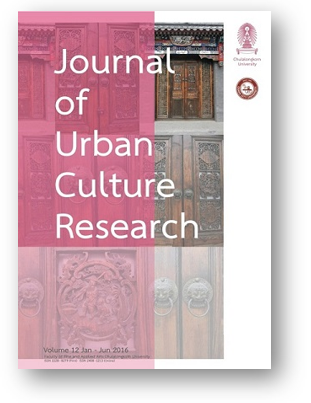Phra Phutha: A Thai Music Composition based on Astrological Beliefs
DOI:
https://doi.org/10.14456/jucr.2016.8Keywords:
Thai Music, Composition Techniques, Thai songs, Thai Composition, Thai Classical Music, Phra Phutha, Planetary DeitiesAbstract
This research project aimed at creating a Thai composition to express Thai astrological beliefs about the legend of Phra Phutha (Mercury) one of the Nine Planetary Deities – Phra Athit (the Sun), Phra Chan (the Moon), Phra Angkarn (Mars), Phra Phutha (Mercury), Phra Pharuehatsabodi (Jupiter), Phra Suk (Venus), Phra Sao (Saturn), Phra Rahoo (Pluto) and Phra Kate (Neptune) – and to create a body of knowledge in the form of a new musical composition transposed in the style of descriptive music (Program music) to show the particular characteristics of Phra Phutha deities. This article will deal with the music related to Phra Phutha, which is divided into three parts, namely, the prologue, the lyric and the epilogue. The musical style and movements display tactics in communication and talk through gentle and sweet words, which is the specific characteristic of Phra Phutha.
The musical performance relies on three traditional Thai woodwind instruments – the Khlui Lip (High pitch pipe), the Khlui Phieng-or (Medium pitch pipe) and the Khlui Ou (Low pitch pipe). The melodies are relying on the method of altering the melodies, imitating and interrupting, as well as accelerating and reducing the tempo. This music is an innovation which is derived from the arrangement of musical elements and other contexts. It is an example of a new method of composing Thai music.
Downloads
Published
How to Cite
Issue
Section
License
Authors authorize the JUCR to publish their materials both in print and online while retaining their full individual copyright. The copyright of JUCR volumes is retained by Chulalongkorn University.
The views and opinions expressed herein are those of the individual author(s) and do not necessarily reflect the policies or opinions of the Journal (JUCR), it editors and staff, Chulalongkorn University, or Osaka Metropolitan University.








